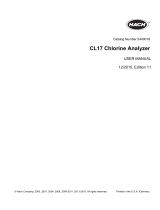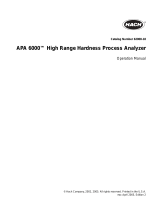
3
TABLE OF CONTENTS
CERTIFICATION............................................................................................................................................................ 5
SAFETY PRECAUTIONS.............................................................................................................................................. 7
SPECIFICATIONS.......................................................................................................................................................... 9
SECTION 1 GENERAL INFORMATION......................................................................................................... 13
1.1 Instrument Description............................................................................................................................................. 13
1.2 Principle of Operation.............................................................................................................................................. 14
INSTALLATION....................................................................................................................................................... 15
SECTION 2 INSTALLATION............................................................................................................................... 17
2.1 Instrument Environmental Considerations............................................................................................................... 17
2.2 Unpacking the Instrument........................................................................................................................................ 17
2.3 Wall Mounting the Instrument................................................................................................................................. 18
2.4 Plumbing Connections ............................................................................................................................................. 21
2.5 Installing the Sample Line........................................................................................................................................ 22
2.6 Optional Air Purge................................................................................................................................................... 23
2.7 Sample Conditioning................................................................................................................................................ 23
2.7.1 Assembling the Sample Conditioning Kit...................................................................................................... 23
2.7.2 Using the Sample Conditioning Kit................................................................................................................ 24
2.8 Electrical Connections.............................................................................................................................................. 26
2.8.1 Power Connections......................................................................................................................................... 26
2.8.2 Wiring the Instrument..................................................................................................................................... 28
2.8.3 Voltage Selection for Alternate Voltage Operation........................................................................................ 28
2.8.4 Alarm Connections......................................................................................................................................... 29
2.9 Installing Pump/Valve Pinch Plate........................................................................................................................... 31
START UP................................................................................................................................................................... 33
SECTION 3 STARTING THE INSTRUMENT................................................................................................ 35
3.1 Introduction.............................................................................................................................................................. 35
3.2 Installing the Reagents............................................................................................................................................. 35
3.2.1 Priming the Reagents (optional)..................................................................................................................... 36
3.3 Installing the Stir Bar ............................................................................................................................................... 36
3.4 Supplying Sample .................................................................................................................................................... 37
3.5 Supplying Power...................................................................................................................................................... 37
3.6 Two-point Standardization....................................................................................................................................... 38





























